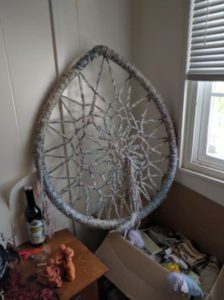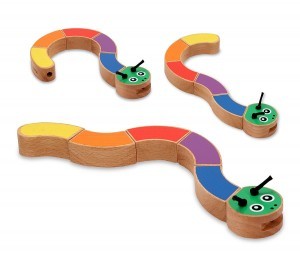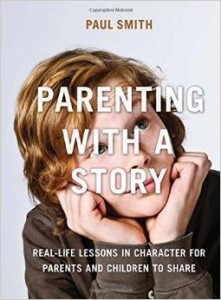Originally posted on Pagan Families, 7/16/14. I’ve spent countless hours helping my daughters fall asleep, nursing and bouncing, massaging and singing and praying, lying absolutely quiet or else reciting Mother Goose. By the time my eldest was preschool age, I turned to magic. I began using guided meditations with my daughter around the time she was two and a half. She already enjoyed storytelling immensely, so I figured she could visualize well enough to benefit from a simple trance induction aimed at sleep.
Tell Me the Rainbow

This one was adapted from Starhawk’s Rainbow Trance Induction in The Spiral Dance. After a couple tries, my daughter started requesting it when she was having trouble sleeping.
Are you in a comfy position? I’m going to tell you the colors of the rainbow. If you listen and try not to move, you’ll feel your body getting heavier and heavier, and sleepier and sleepier, until you sink down all the way down into sleep.
 You feel yourself floating on a red cloud, a beautiful red cloud. Red surrounding you, red all around. Touching red, feeling red, tasting red. A beautiful red cloud. Drift down through the red, deeper and deeper, sleepier and sleepier, until you reach an orange cloud. A beautiful orange cloud…
 Continue with a similar script through yellow, green, blue, and purple clouds, and at the end of the purple cloud, drift down, down into sleep. As with trance inductions in general, keep a low, slow tone to your voice. Visualize the clouds along with your child, so that you and your voice also get sleepier and slower as you go.
As my daughter got older, she got better at falling back asleep at night, but stretched bedtime longer and longer. Bedtime stories seemed to generate more excitement and questions than sleepiness, so as an alternative, I started offering her this meditative journey to dreamland.
To The Gates of DreamingÂ

1. Pick a Guide. Before you begin, choose a figure who will guide your child on the journey to the Gates of Dreaming. Originally we picked a horse, since at that point everything in my daughter’s life was about horses. Lately she’s requested a flower fairy companion. You might also choose yourself, a favorite toy, or ask a familiar hero or god for help. Once you know the companion, choose whatever setting seems obvious, or else start out from a place your child likes to play. As your child gets to know the process, she (or he) can start to choose her own companion and setting.
2. Set Expectations. Before you start the meditation, it’s useful to introduce the concept of a mental journey and tell your child how to prepare for it. I originally said something like this: “Every night as we go to sleep, our minds go on a trip and travel into all sorts of dreams. I’m going to lead you there now, down the path to sleep and right to the Gates of Dreaming. It’ll only work if you’re lying still and comfy… Are you ready?â€
3. Setting Out. Start by describing the place where your child begins her journey, using a low, sleepy voice. Aim for a few evocative details targeting several senses, and let your child’s mind fill in the rest.  Now have the companion approach and beckon the child to come with him (or her).
4. Something Marvelous. As the child starts to follow, something extraordinary happens, something that breaks with waking expectations. Maybe your child undergoes a marvelous transformation; for example, she might suddenly grow wings and take off into the sky, ride a horse into the sea, grow into a giant.  Or she might find a cave entrance in your backyard.
5. The Journey. As you continue the journey, let images unfold in your mind’s eye and narrate what you see as it comes to you. When your child is close to sleep, stop at a place that seems interesting to explore, or if your guide told you where you were going, nudge the meditation so that you arrive there.
6. The Gates of Dreaming. Describe the new place. As you look around it, you’ll find a doorway of some sort. “These are the Gates of Dreaming,†the guide says. “Stay here as long as you like, and when you are ready, you may pass through the door into sleep.â€
Sometimes your child may wake up again instead of drifting off to sleep. Welcome her back and find out if there’s anything making it harder for her to sleep. Is there something she keeps thinking about? This last meditation is for people who are too excited or worried to fall asleep.
Â
Summon a Sleep Spider

Imagine you have a spider friend, and call to her inside your head to help you with your problem. See her sitting on the edge of her web, waiting. Whatever it is you keep thinking about flies into her web and gets stuck there. Now the spider scurries forward. She bites the thought, paralyzes it, and she’s going to wrap it up in a cocoon. It’ll be safe there until you’re ready to come back for it in the morning. She’s wrapping it up, wrapping and wrapping and wrapping, until every bit of the idea is covered and you can’t see it any more. All you see is a lump covered in bright spider silk. Now you can thank your sleep spider and go to sleep. (If your child finds spiders scary, try putting the thought in a box instead, and wrapping it up to mail. Or plant the thought like a seed in your garden, cover it with dirt, water it, and let it rest in the ground until morning.)
In the end, kids always go to sleep, with or without help. It’s possible that leaning on meditations too much might slow down the process of learning to put themselves to sleep, but practicing guided meditations together teaches its own lessons. For me, the gentleness and camaraderie of drifting toward sleep together beats out whatever I might’ve gained by sending my daughter to sleep differently. Enjoy!









